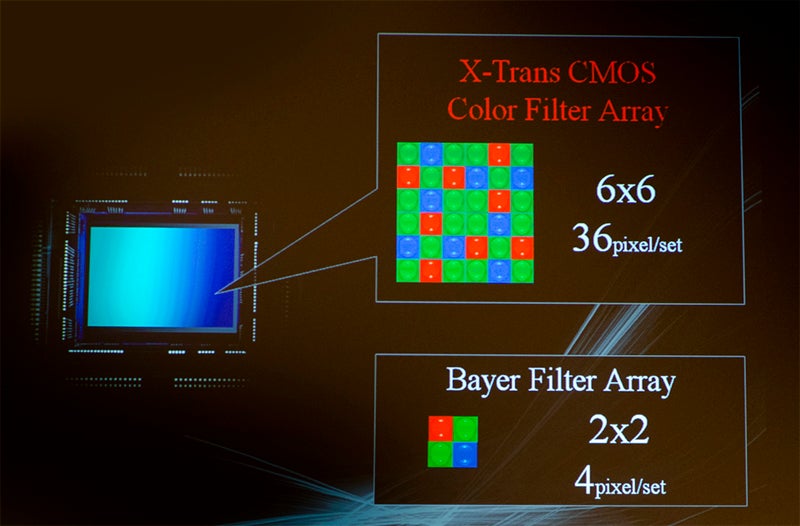Fujifilm's X-Pro1 - the company's first Compact System Camera - looks to be an impressive rangefinder-style camera. Does it deliver on its superior image quality claims? What Digital Camera's Fuji X-Pro1 review investigates...
Fujifilm X-Pro1 Review
X-Trans CMOS: What Is It And How Does It Work?
A conventional camera sensor uses what’s known as the Bayer filter array to decipher colour information. As light is made up of a spectrum of colours, each with different frequencies, it’s possible to filter out the prime red, green and blue colours, then use an algorithm (known as ‘demosaicing’) to calculate the colour at every site. However, the filter’s pattern is based on red, green and blue filters arranged in a repetitive 2×2 grid across the sensor’s surface which would cause issues with fine detail, colour artefacts and moiré patterning if it wasn’t for the use of a low-pass or anti-aliasing filter to ‘soften’ the light. However, such softening results in slightly softer images too.
 This is where the X-Pro1’s X-Trans CMOS sensor gets clever. Instead of
This is where the X-Pro1’s X-Trans CMOS sensor gets clever. Instead of
using the usual 2×2 (4-part) grid, it uses a 6×6 (36-part) pattern where
colours aren’t ‘clumped’ together, ensuring that at least one red,
green and blue pixel each fall within both vertical and horizontal
paths. As the pattern isn’t repetitive – and Fujifilm claim’s it’s more
like traditional film – there’s no need for an anti-aliasing filter and,
therefore, shots should be that much sharper compared to standard
sensors.
The only other sensor on the market to use a similar process
is the Sigma Foveon X3 sensor, which has three layers of red, green and
blue pixels mounted at different depths within a silicon sensor – this
provides full colour information to every site, and also doesn’t require
anti-aliasing. Good though the technology is at low ISO settings, it
can’t compare to the Fujifilm sensor at higher sensitivities.




